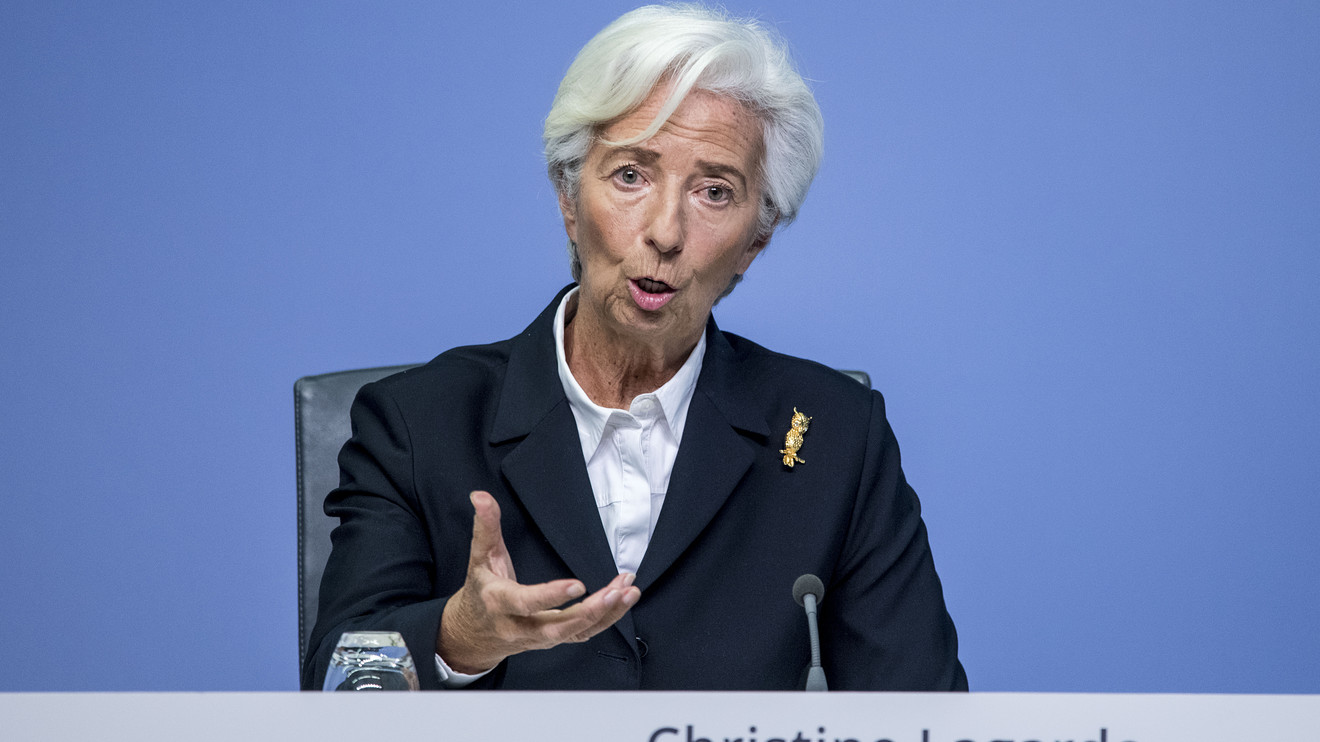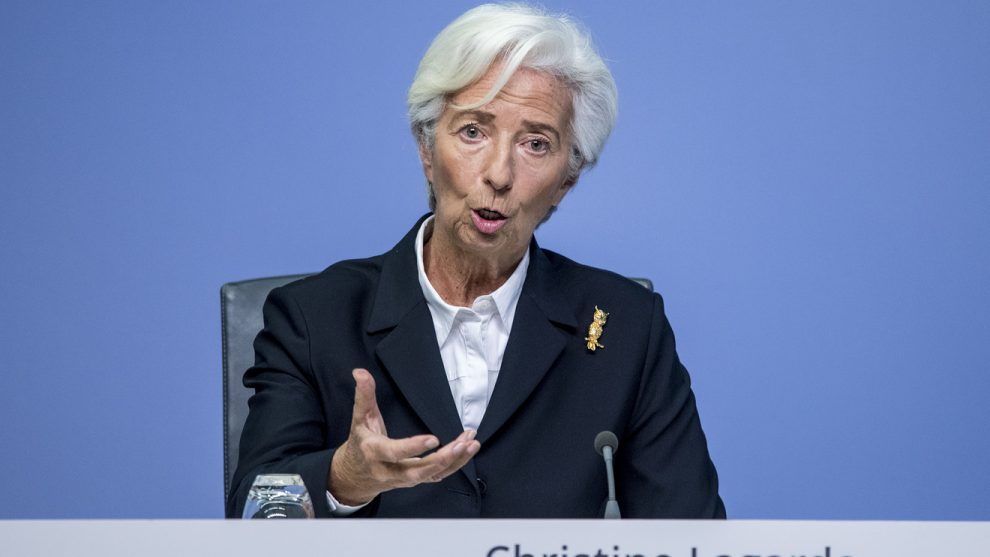
If there was any doubt, Christine Lagarde made it clear Thursday that its asset buying program, now increased to €1.35 trillion, is likely to remain a key component of the European Central Bank’s coronavirus crisis fighting arsenal, economists say.
The ECB surprised investors by increasing the size of its pandemic emergency purchase program, or PEPP, to €1.35 trillion ($1.52 trillion) from €750 billion, and extending its run from the end of this year at least through June 2021, while pledging to continue reinvesting maturing principal payments at least through the end of 2022. Economists had penciled in a rise of around €500 billion.
The highly flexible program will help absorb increased borrowing by governments as they ramp up spending in an effort to counter the deep downturn caused by the COVID-19 pandemic. It was also designed to allow the ECB to quell volatility in financial markets and to fight against market fragmentation, in which interbank lending costs across the eurozone diverge, undercutting the effectiveness of monetary policy.
More important, however, was Lagarde’s linking of the program to the ECB’s inflation target, analysts said. Lagarde, in her news conference, said that the decision to extend the time frame for PEPP was in part due to the expectation that “inflation hopefully will start kicking in again and we will have a better visibility of the situation at that point in time.”
By linking PEPP to the inflation outlook, Lagarde is signaling that the program “is not just a temporary fire hose, but an integral part of the ECB’s crisis fighting toolbox,” wrote Claus Vistesen, chief eurozone economist at Pantheon Macroeconomics, in a note.
“In this sense, the PEPP is the bazooka that the OMT never became due to the thorny issue of conditionality,” he said, referring to the Outright Monetary Transaction program introduced by Lagarde’s predecessor, Mario Draghi, but never used. “This line of communication is not a coincidence,” he said.
The ECB’s sole mandate is price stability, which is defined as annual inflation at or near 2%. The ECB’s updated staff projections cut the eurozone inflation forecast for 2020 to 0.3% from a March estimate of 1.1%, rising to 0.8% in 2021 and just 1.3% in 2022. The staff now look for eurozone gross domestic product to contract by 8.7% in 2020 and to rebound by 5.2% in 2021 and by 3.3% in 2022.
The emphasis on PEPP makes sense from the ECB’s perspective, said Wolfgang Bauer, manager of the M&G Absolute Return Bond Fund, in a note.
“Given the high degree of uncertainty around economic and inflation outlooks at this juncture, flexibility is crucia,” Bauer said. “And this is what sets the PEPP apart from other purchase programs. If push comes to shove, the ECB could deviate from the capital key and, for instance, tilt PEPP purchases of government bonds towards the European periphery.”
The capital key is a self-imposed guide that governs the proportion of bonds the ECB can hold from each member country.
European government bond markets appeared to get the message, with yields falling Thursday as investors stepped up to buy bonds issued by the region’s most highly indebted countries.
As a result, the premium demanded by investors to hold the Italian 10-year government bond TMBMKIT-10Y, 1.412% over its German counterpart TMBMKDE-10Y, -0.317% fell by 19 basis points to 1.72 percentage points, according to Tradeweb, the narrowest since March 27.
At the same time though, Lagarde indicated the ECB isn’t yet ready to purchase junk, or sub-investment-grade bonds, as part of its program.
Given how strongly European high-yield credit spreads have narrowed since March, it might be time to take some profits, Bauer said. The absence of a “technical tailwind” from ECB purchases could render the asset class vulnerable if there’s a deterioration in the COVID-19 situation or a run of worse-than-expected economic data, he said.
The euro, meanwhile, rose, despite the implicit easing of policy. That’s because the ECB’s actions are seen capping macroeconomic tail risks, with the decline in uncertainty serving as a “propellant of FX strength,” wrote analysts at Danske Bank, in a note.
See:Europe’s stock market rally is leaving the U.S. behind as ECB and governments step up
The euro EURUSD, +0.69% was up 0.9% at $1.1336, after trading at its strongest level versus the dollar since March 11. European stocks were lower, however, after a recent run of gains, with the Stoxx 600 Europe SXXP, -0.72% down 0.8%.











Add Comment